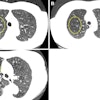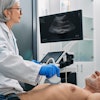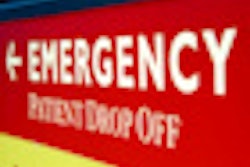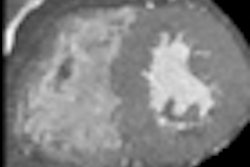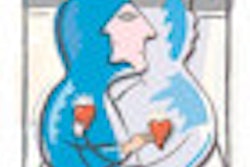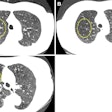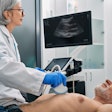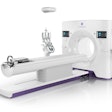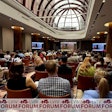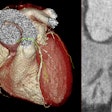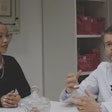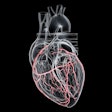Dear Cardiac Insider,
Accurate stenosis measurement is key to successful coronary CT angiography, as the degree of luminal occlusion is often the main factor in determining whether the patient will be managed medically or interventionally. But Polish researchers offered a fresh take on the topic with a study to determine which measurement -- area or diameter -- corresponds most closely to quantitative angiography.
Neither is too far off the mark, but one method corresponds four times as closely to interventional angiography than the other -- if you don't count calcified lesions, the group reported at the European Congress of Radiology (ECR). Find out more by clicking here.
Speaking of coronary artery calcium, even heavy plaque burden won't prevent advanced scanners from assessing the coronary arteries accurately enough to diagnose the patient, according to a Dutch team from Groningen who evaluated more than 5,000 patients. The results were fuzzier for older scanners. You'll find the story by clicking here.
If detecting coronary stenosis is hard, maybe computer-aided detection (CAD) can help. Using their algorithm, Dr. Thomas Henzler and colleagues found 100% per-patient sensitivity and a high negative predictive value, though a few stenosed segments were missed. The system has progressed since its early days (a couple of years ago), and like most other CAD systems helps novice readers the most, the group reported.
Clinical symptoms are one thing you can't count on for detecting stenosis. Most asymptomatic individuals had atherosclerotic disease at CCTA, according to a study you'll find here.
High-field MRI is becoming easier to use routinely now that the big problem of artifacts has been mostly tamed, according to Dr. Bernd Wintersperger, who cited the modality's superior myocardial imaging capabilities, increased spatial and temporal resolution, and real-time functional assessment. Getting excellent results still requires a fair amount of technical know-how, but armed with some basic knowledge, artifact-free images can be produced, he said in a report you'll find here.
That said, MRI still has problems imaging certain structures that are quite visible at CT, such as the outer wall of the aorta. There are workarounds, but none is perfect, according to researchers from the U.K. and Germany. Get the rest of the story here.
In echocardiography, speckle tracking is aiding in cardiac resynchronization, according to a study that re-examined the technique first described in 2007.
Last but not least in your Cardiac Imaging Digital Community, second-generation iterative reconstruction is producing some pretty amazing cardiac images with very little dose, according to the results of several new studies. All you'll need is some patience as you wait for the images to process.


